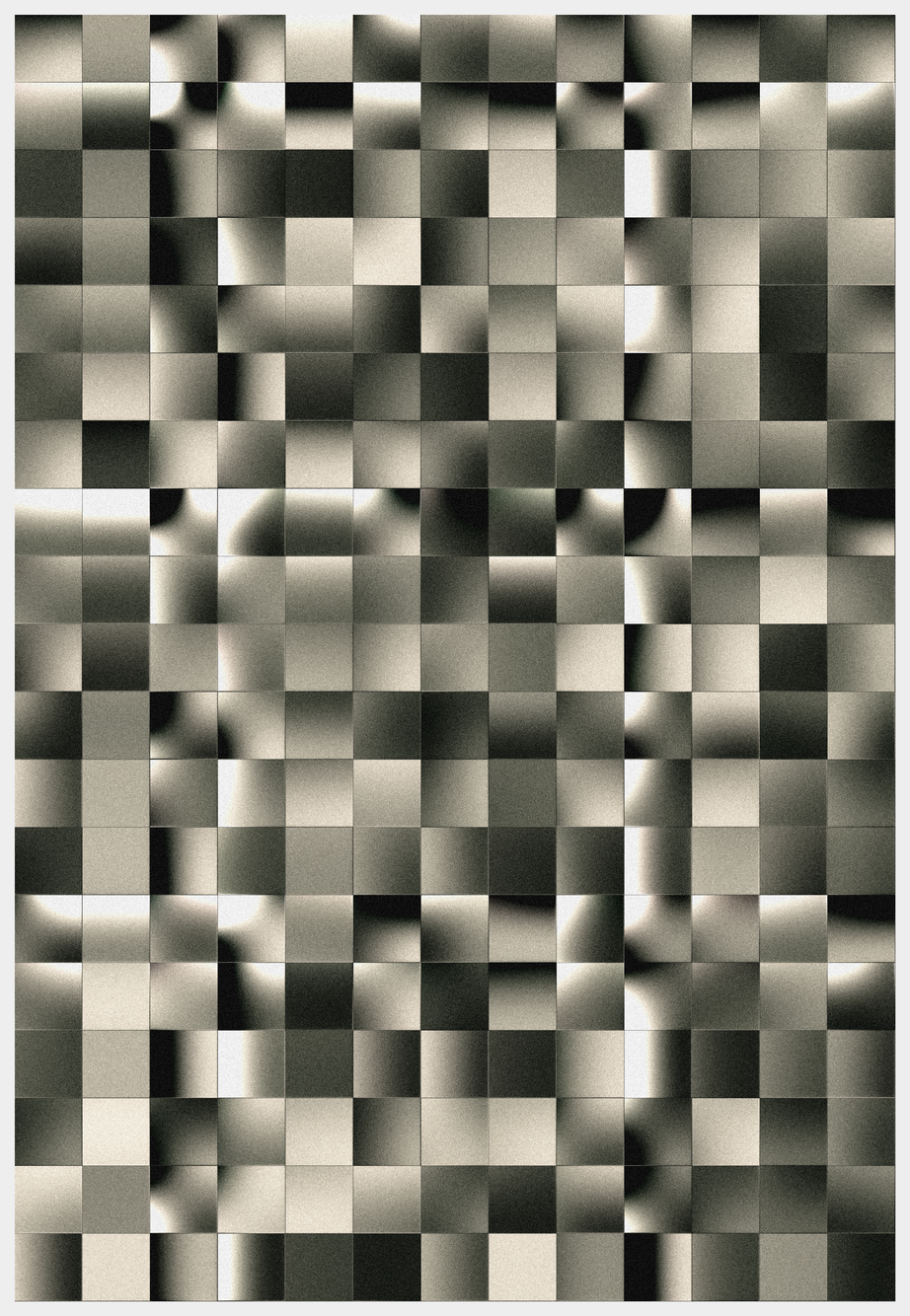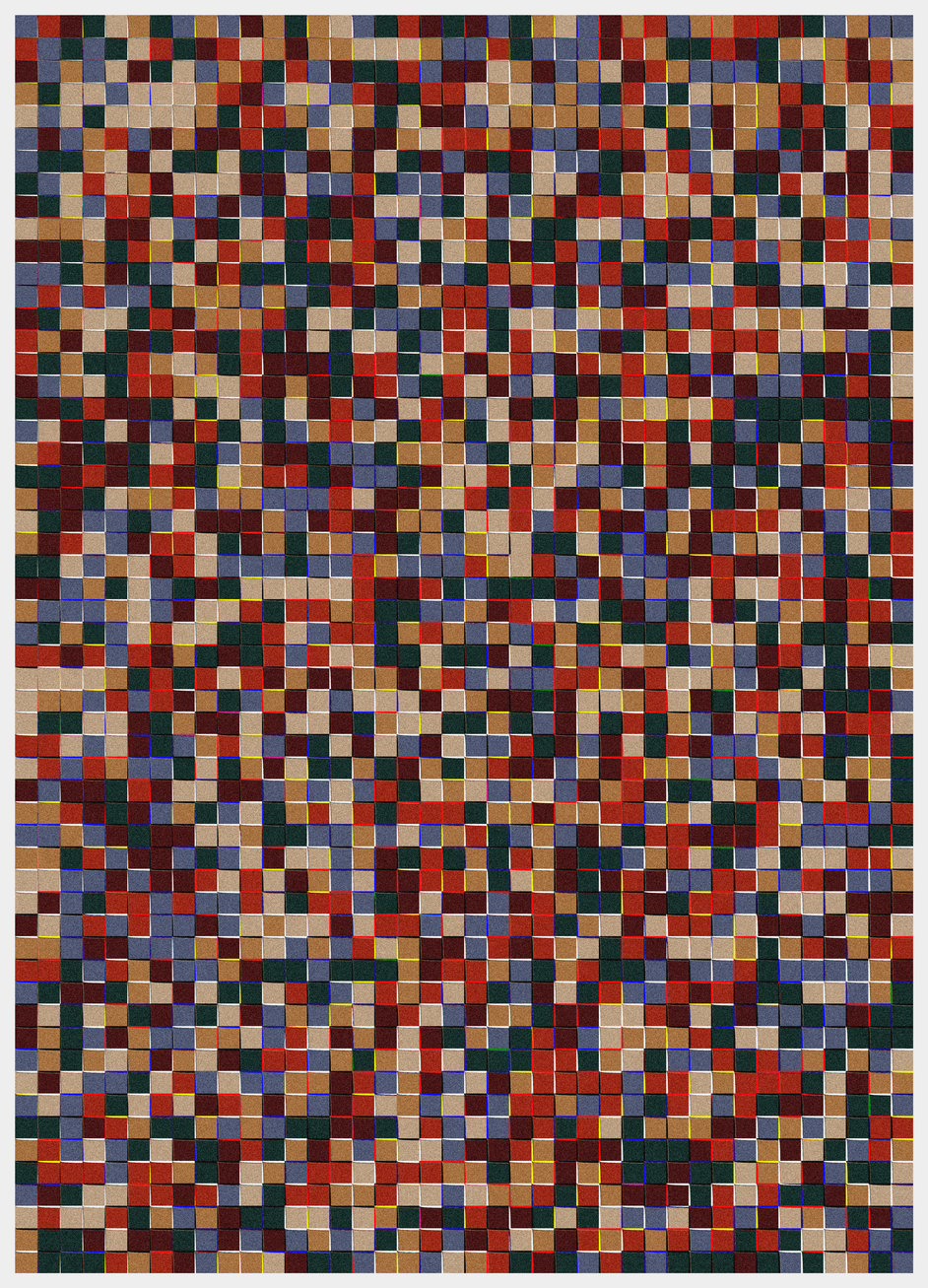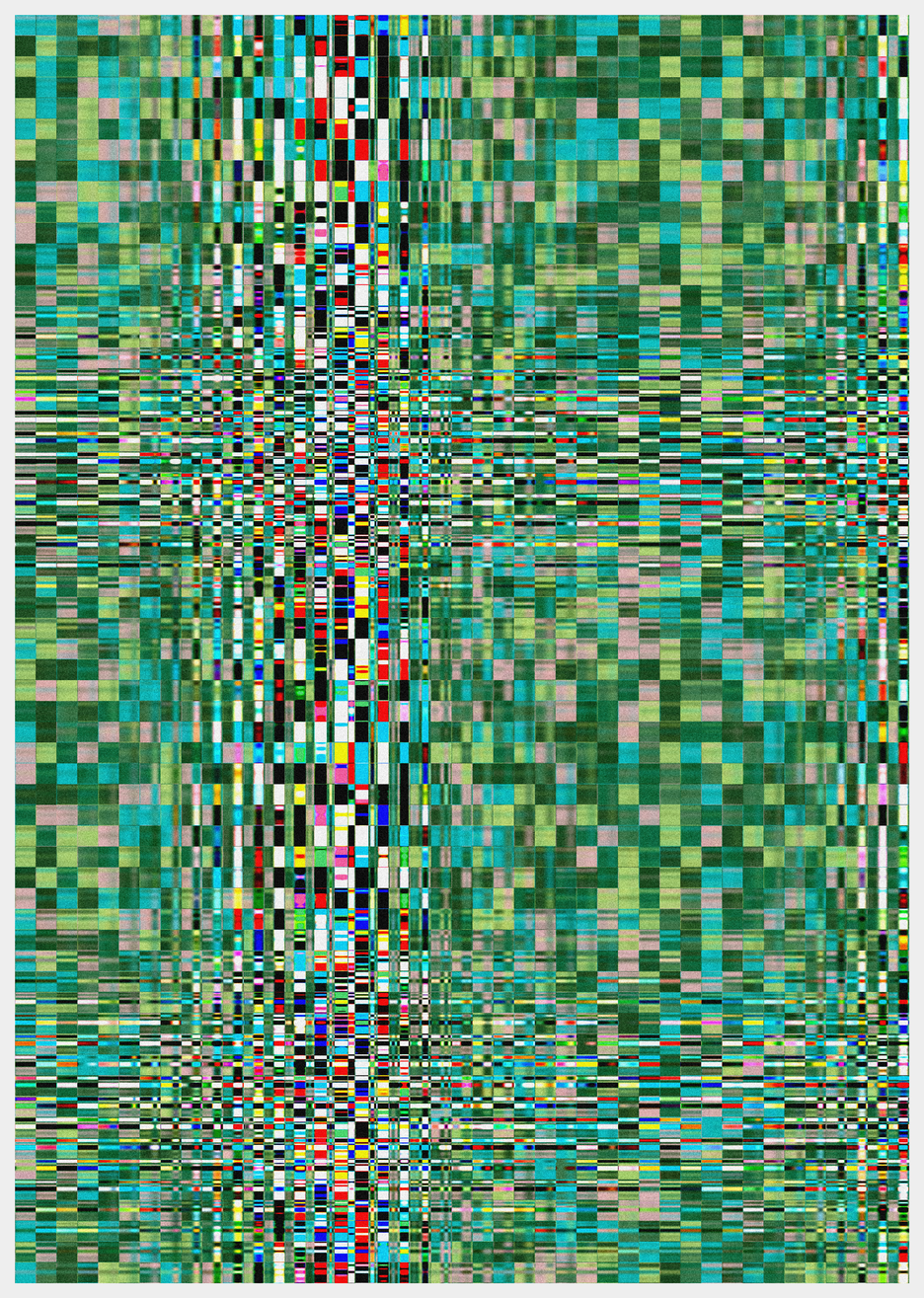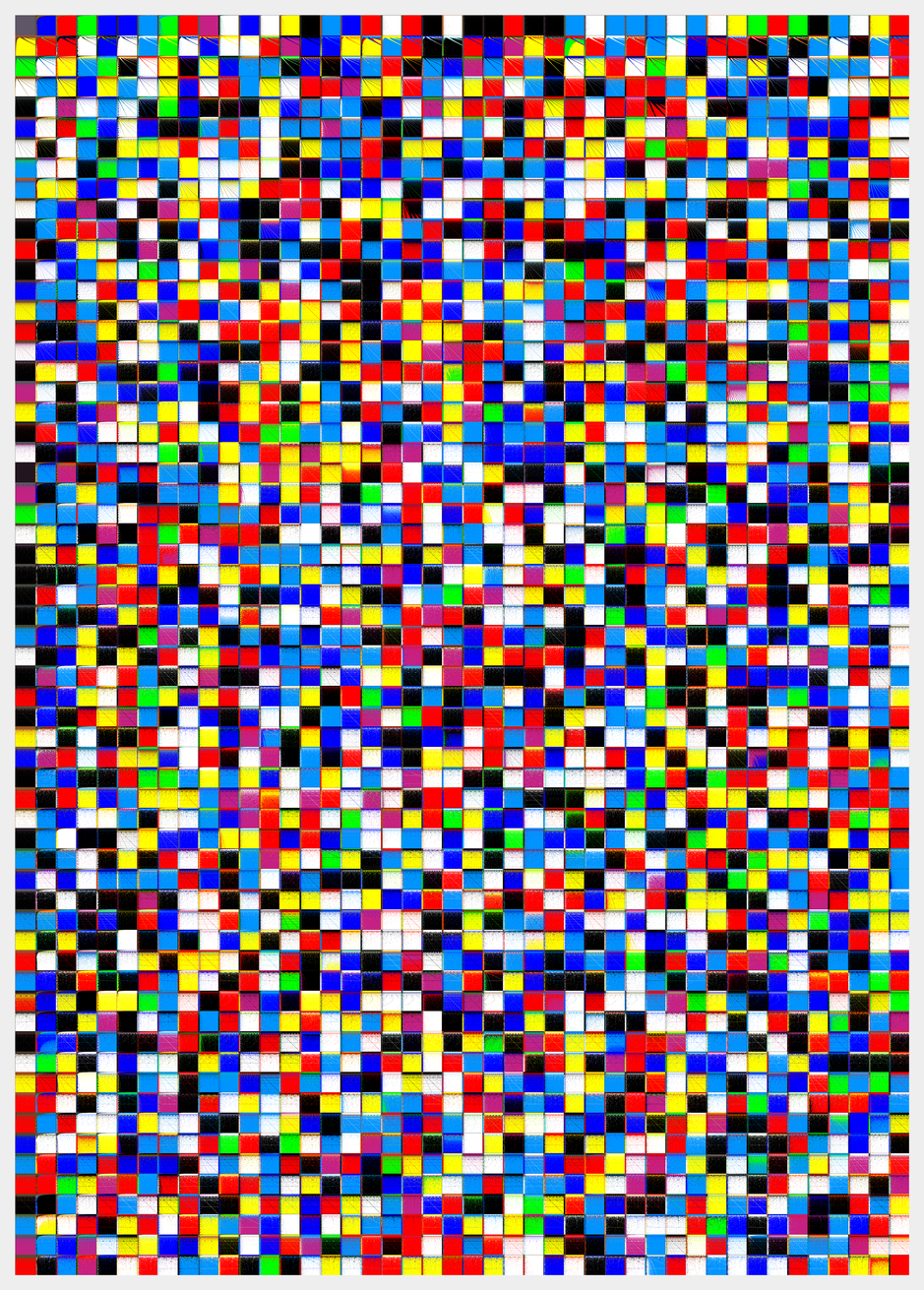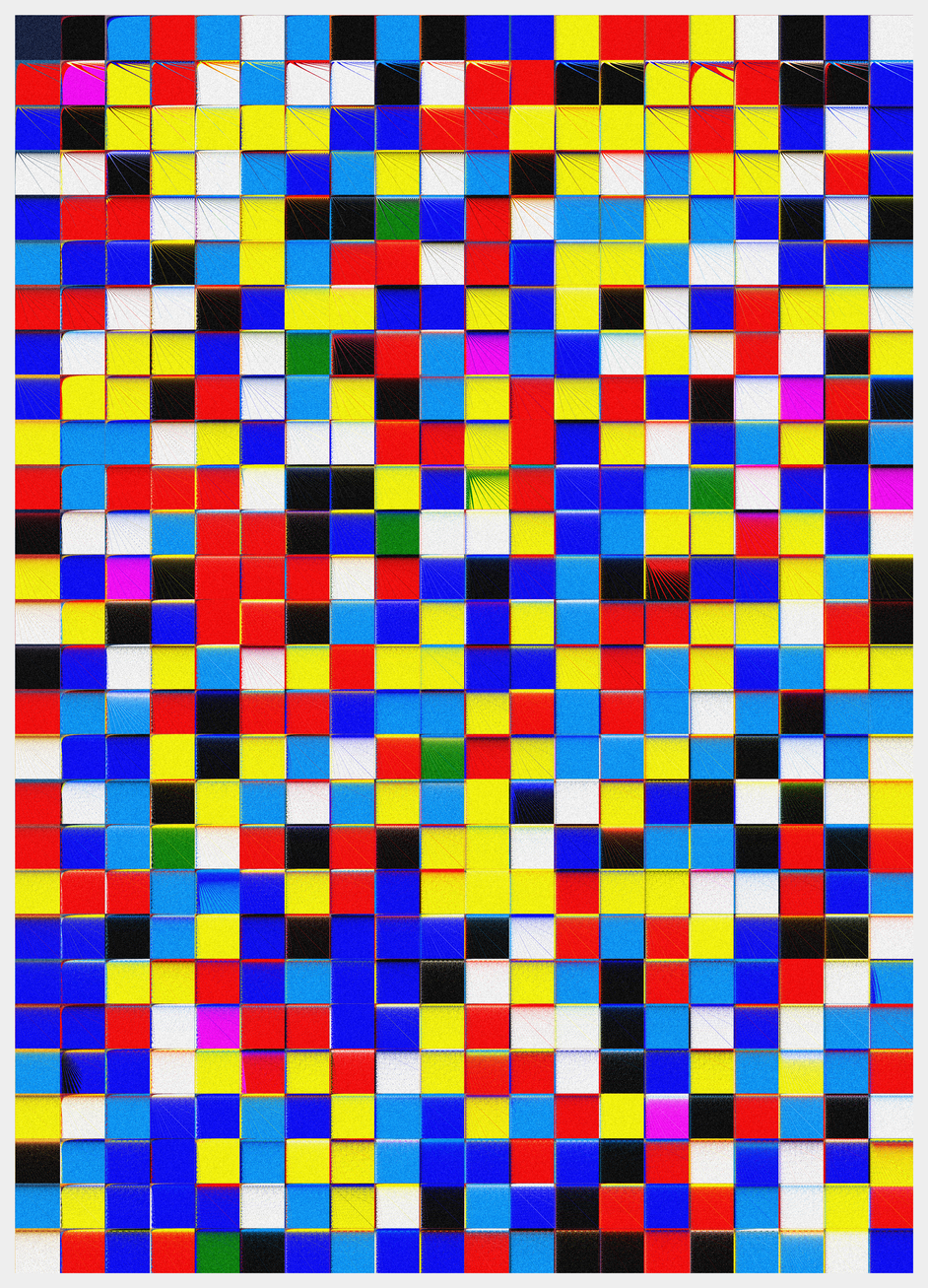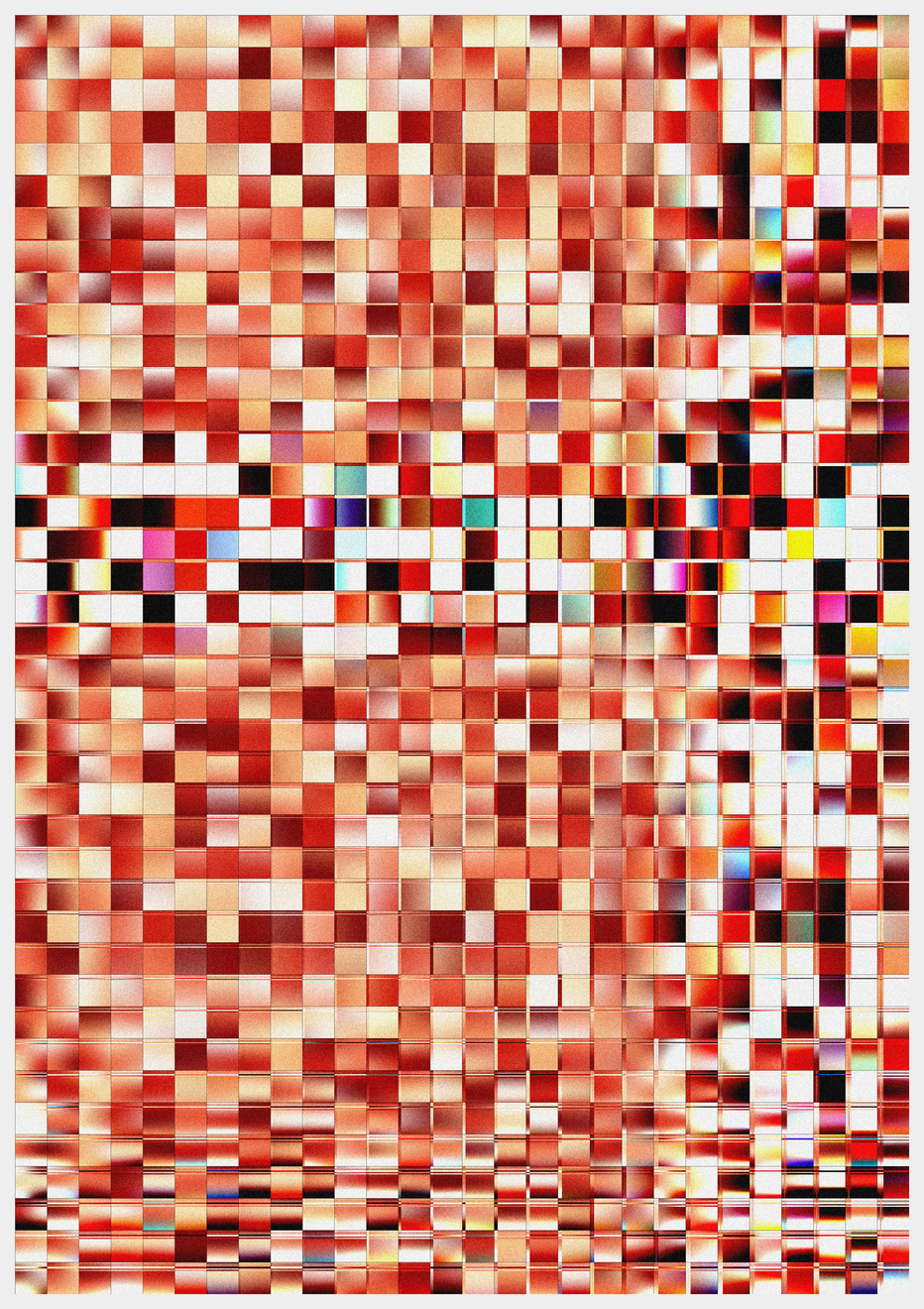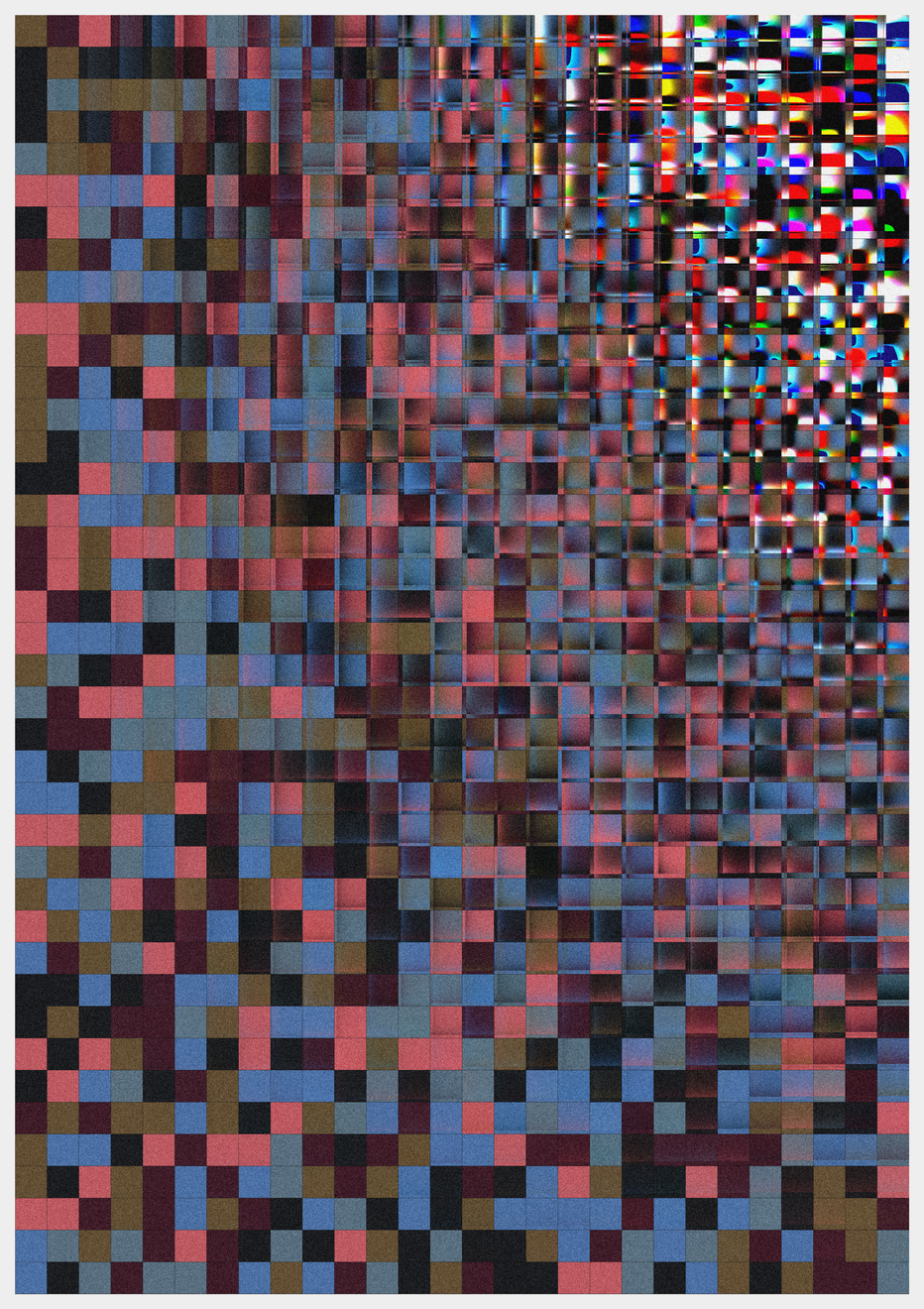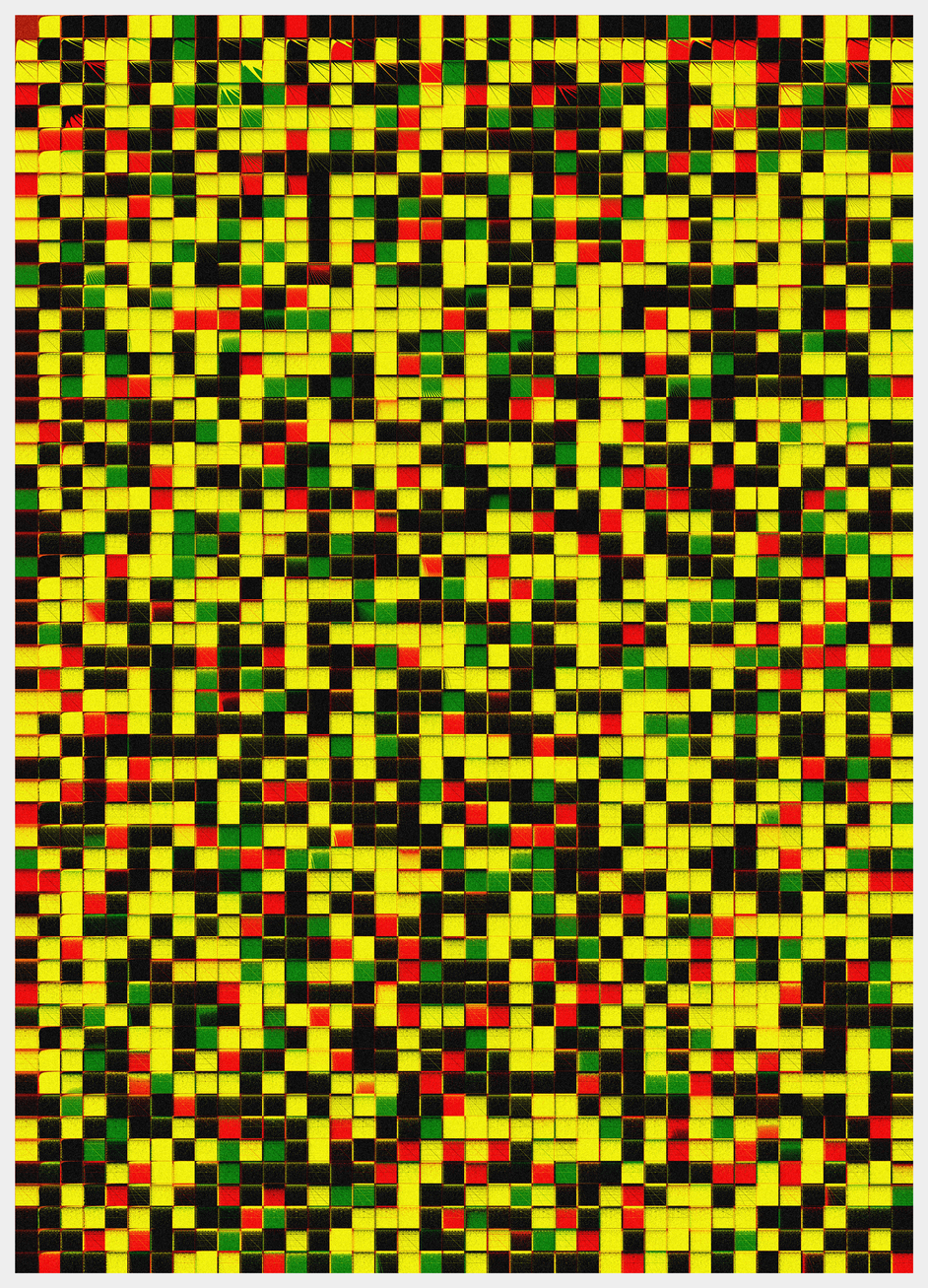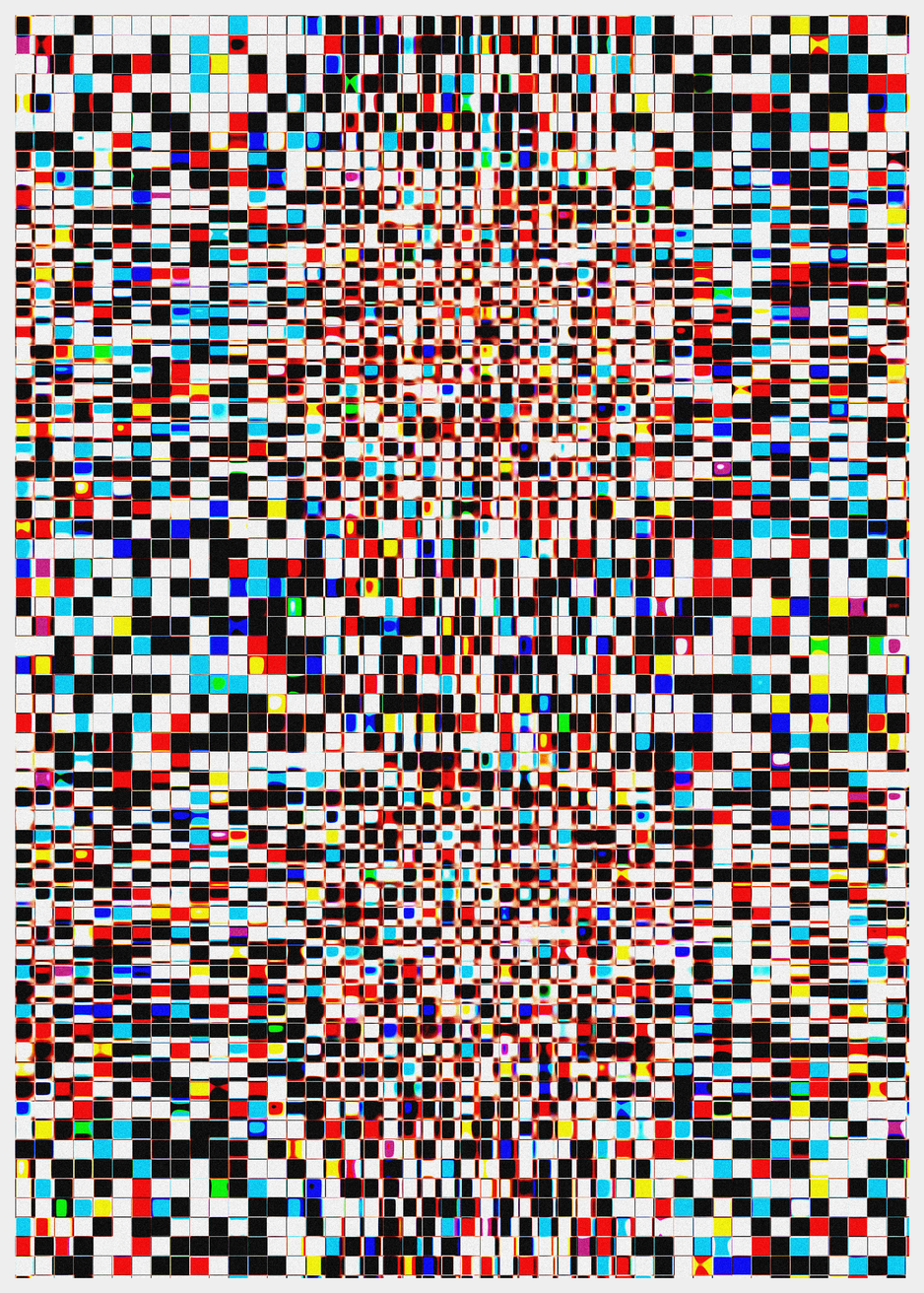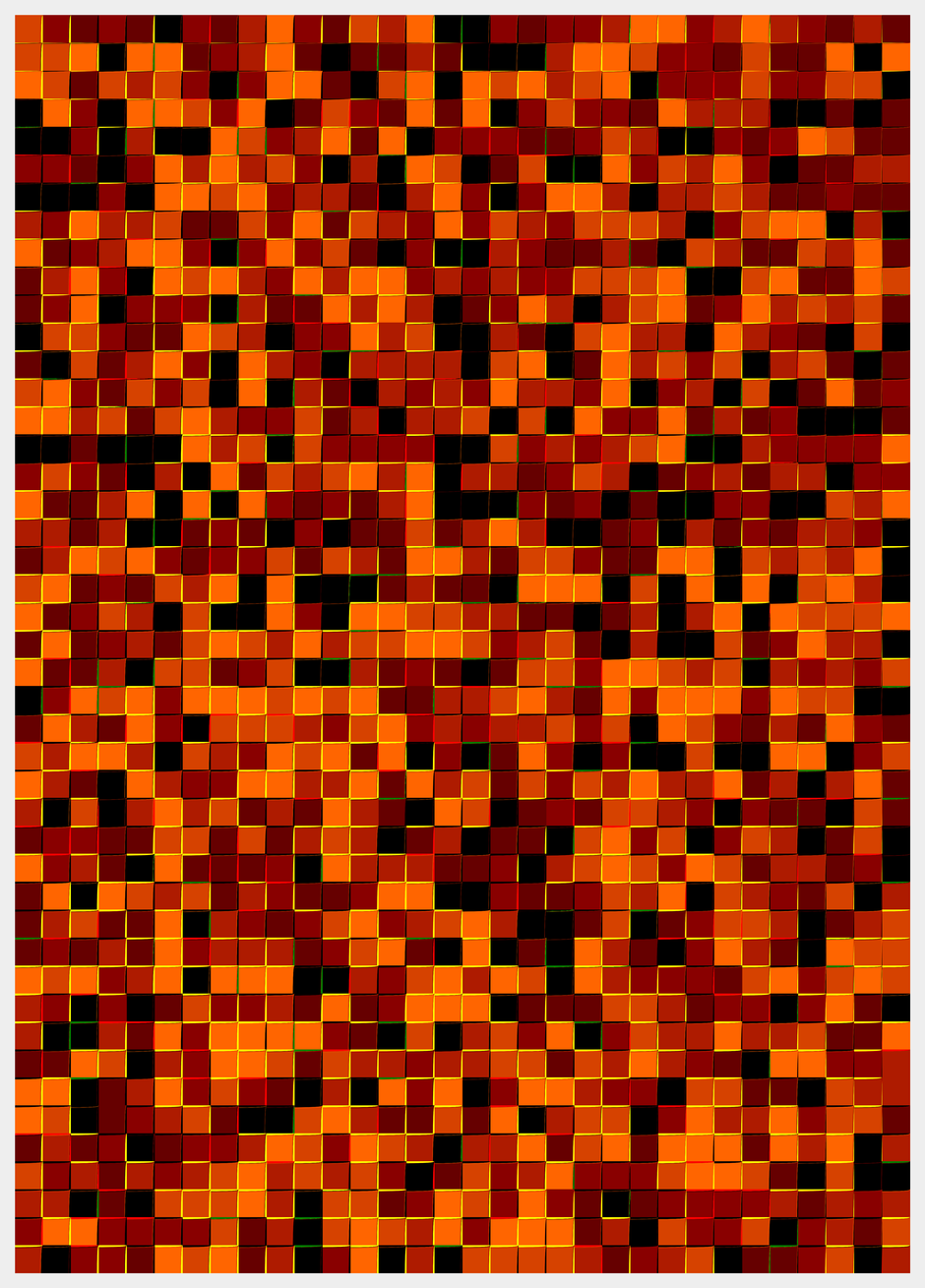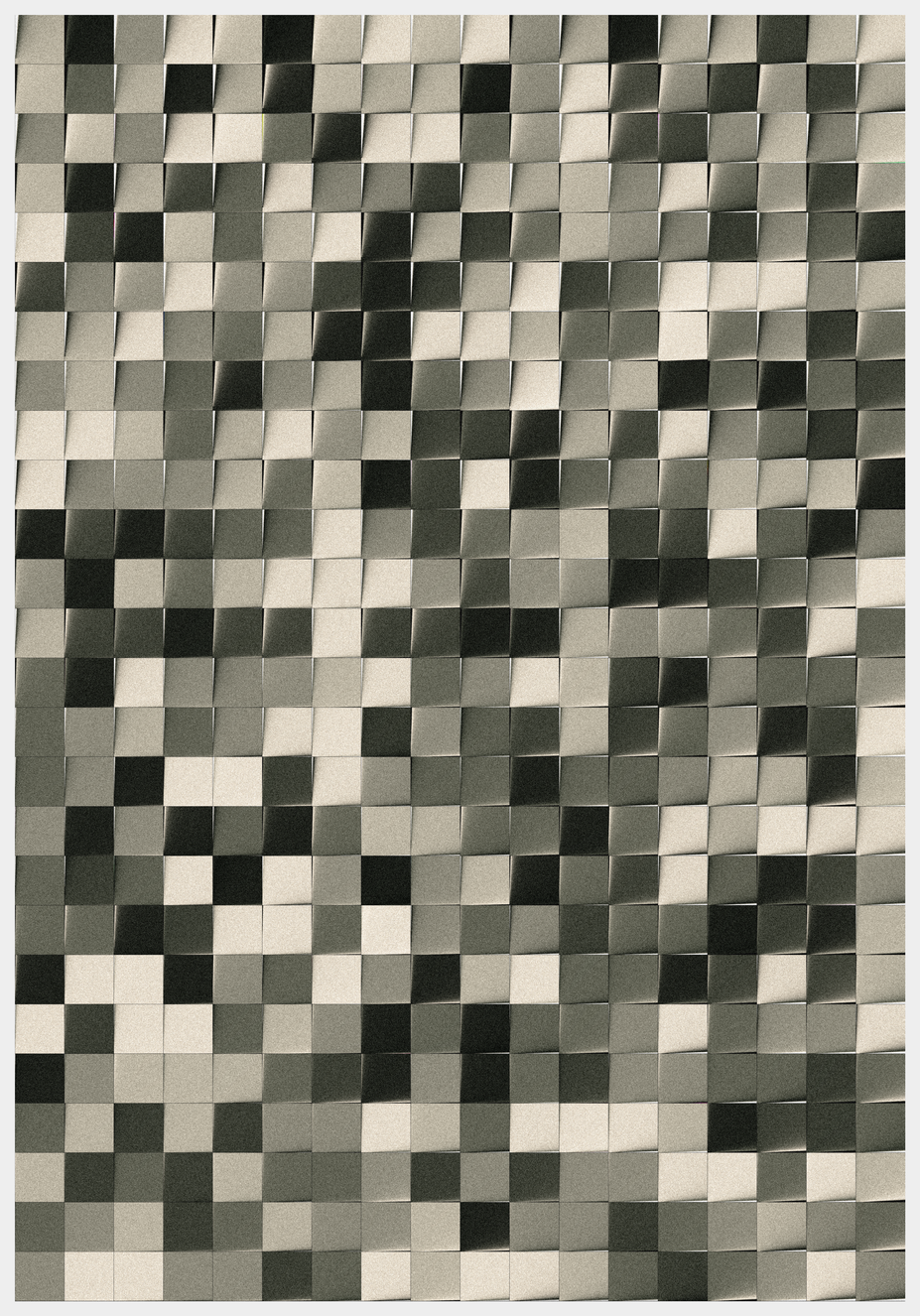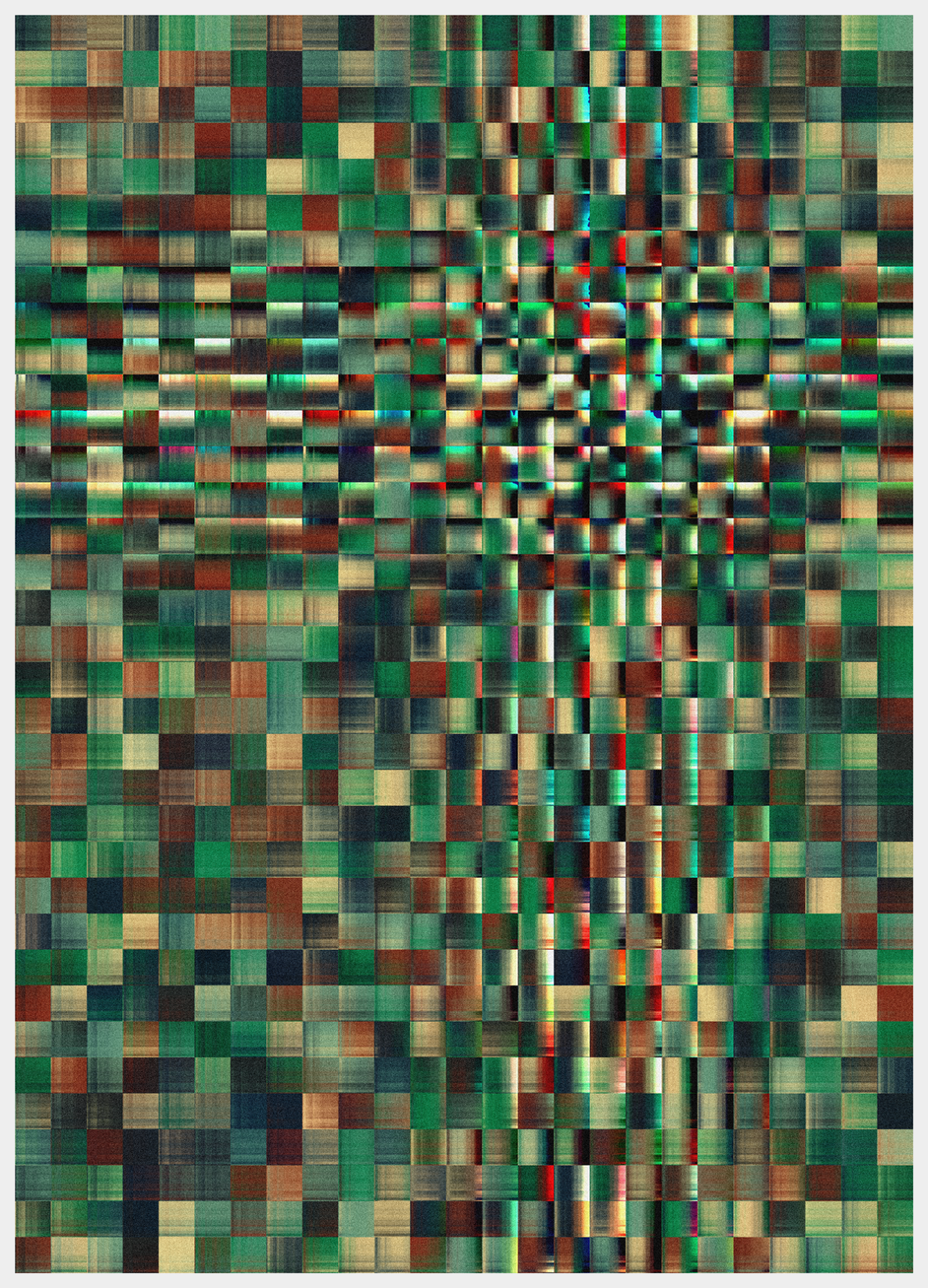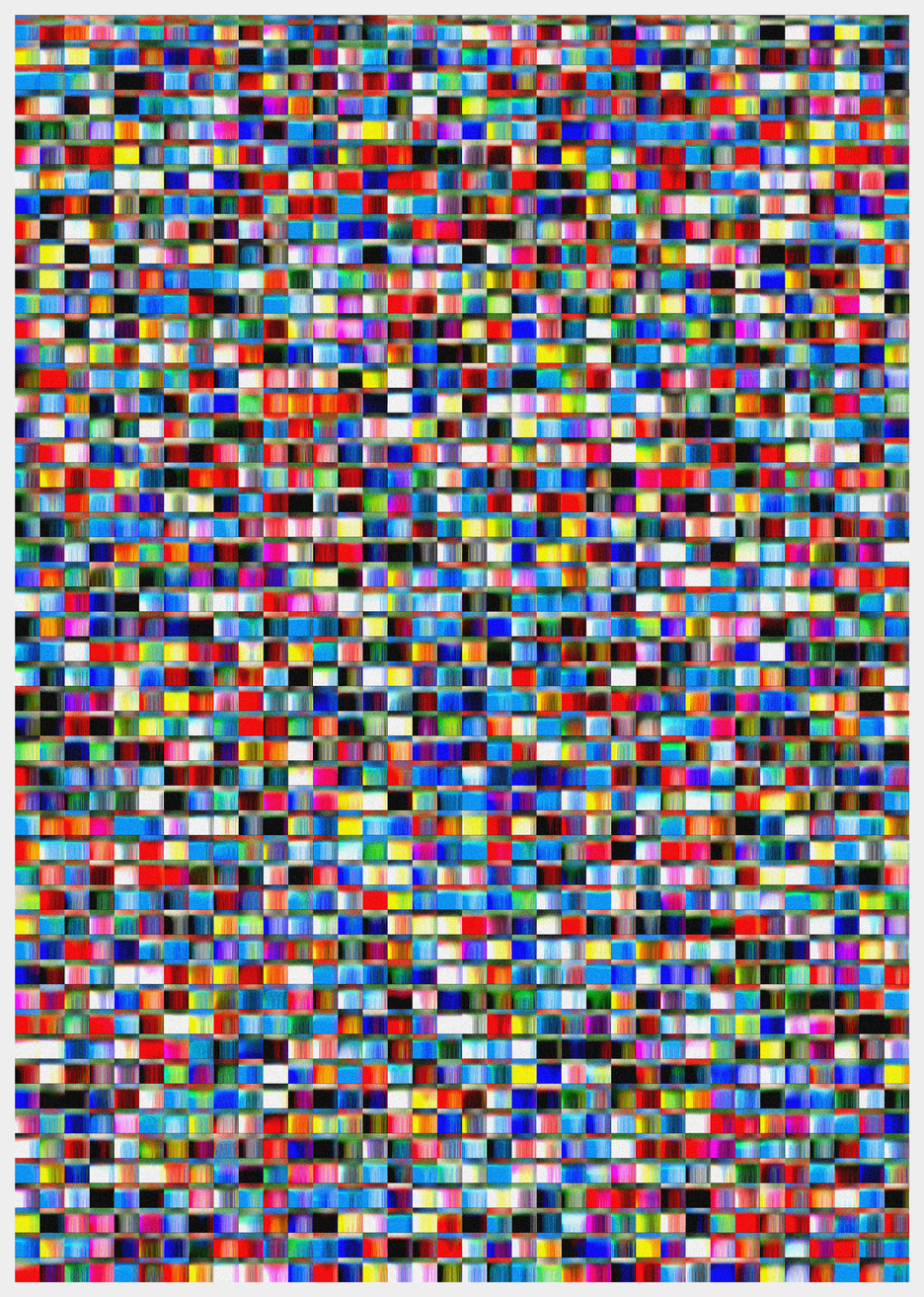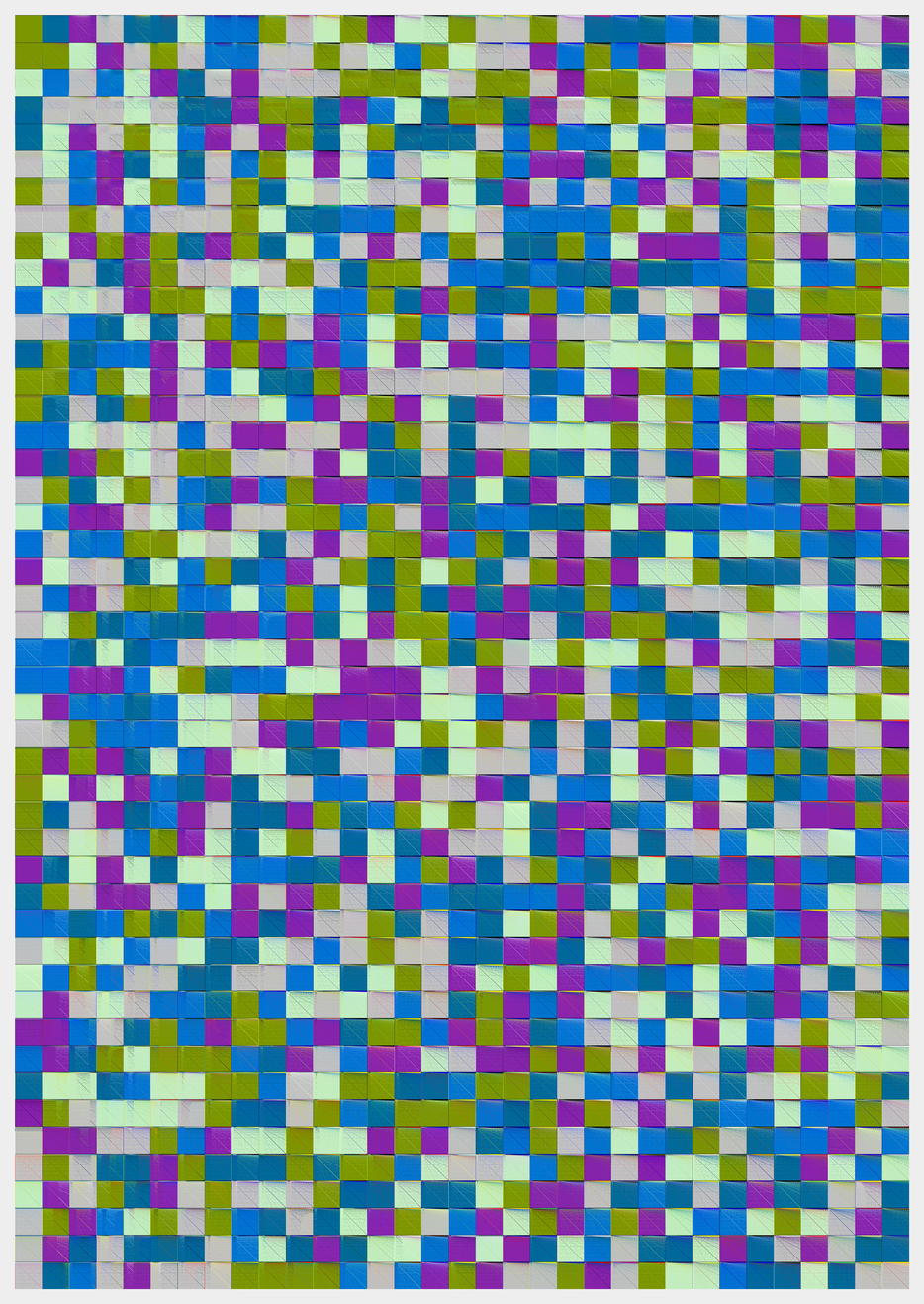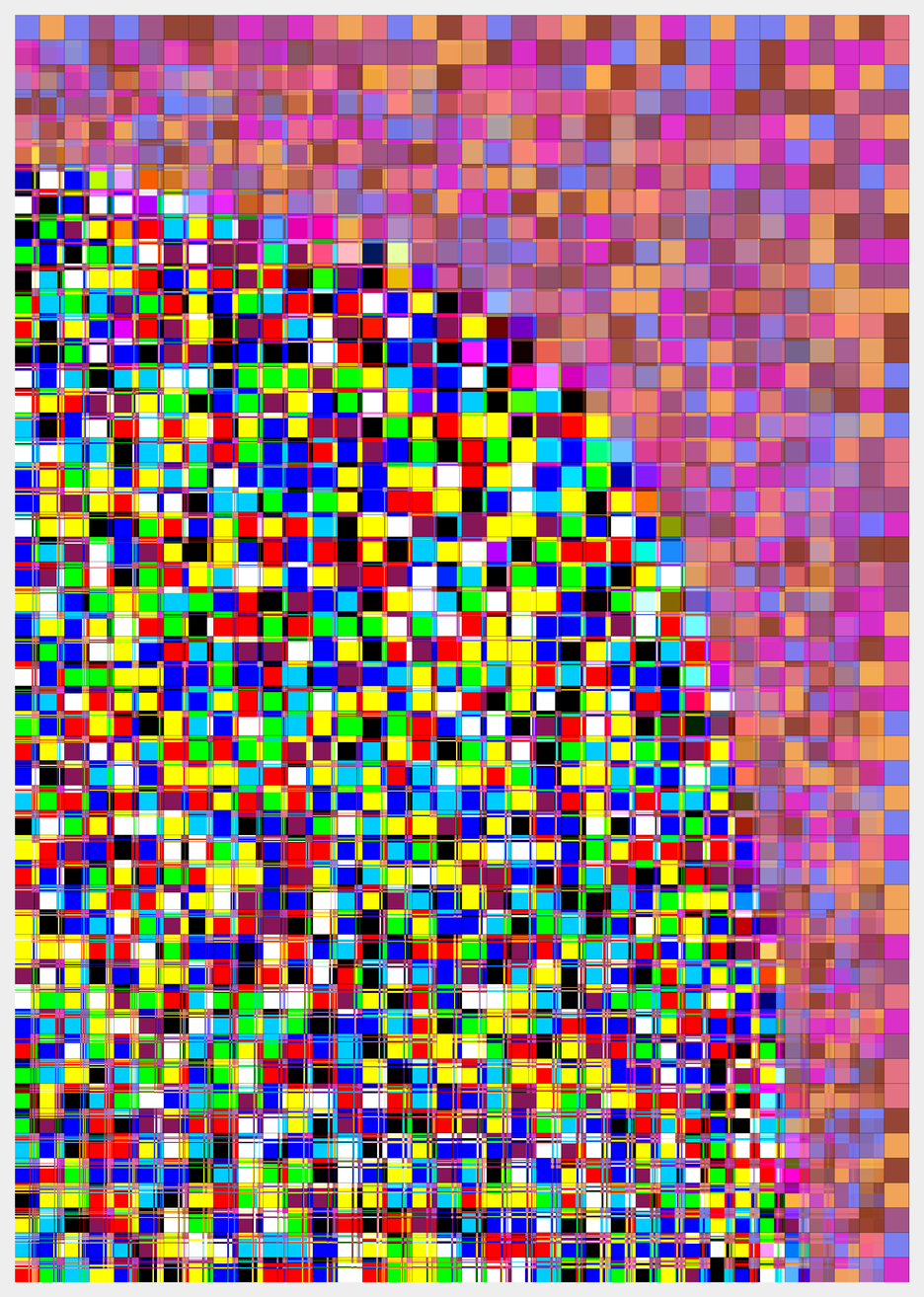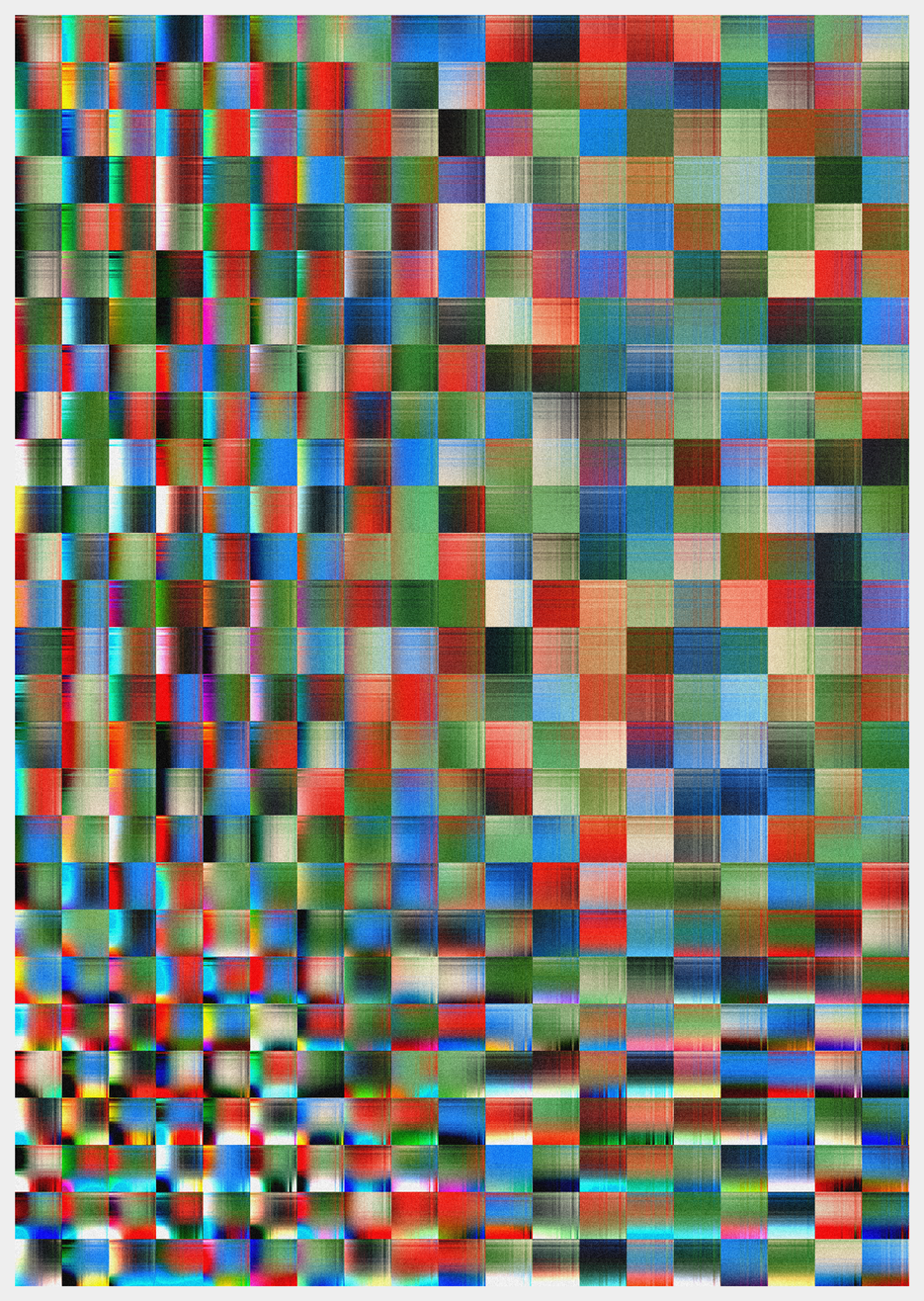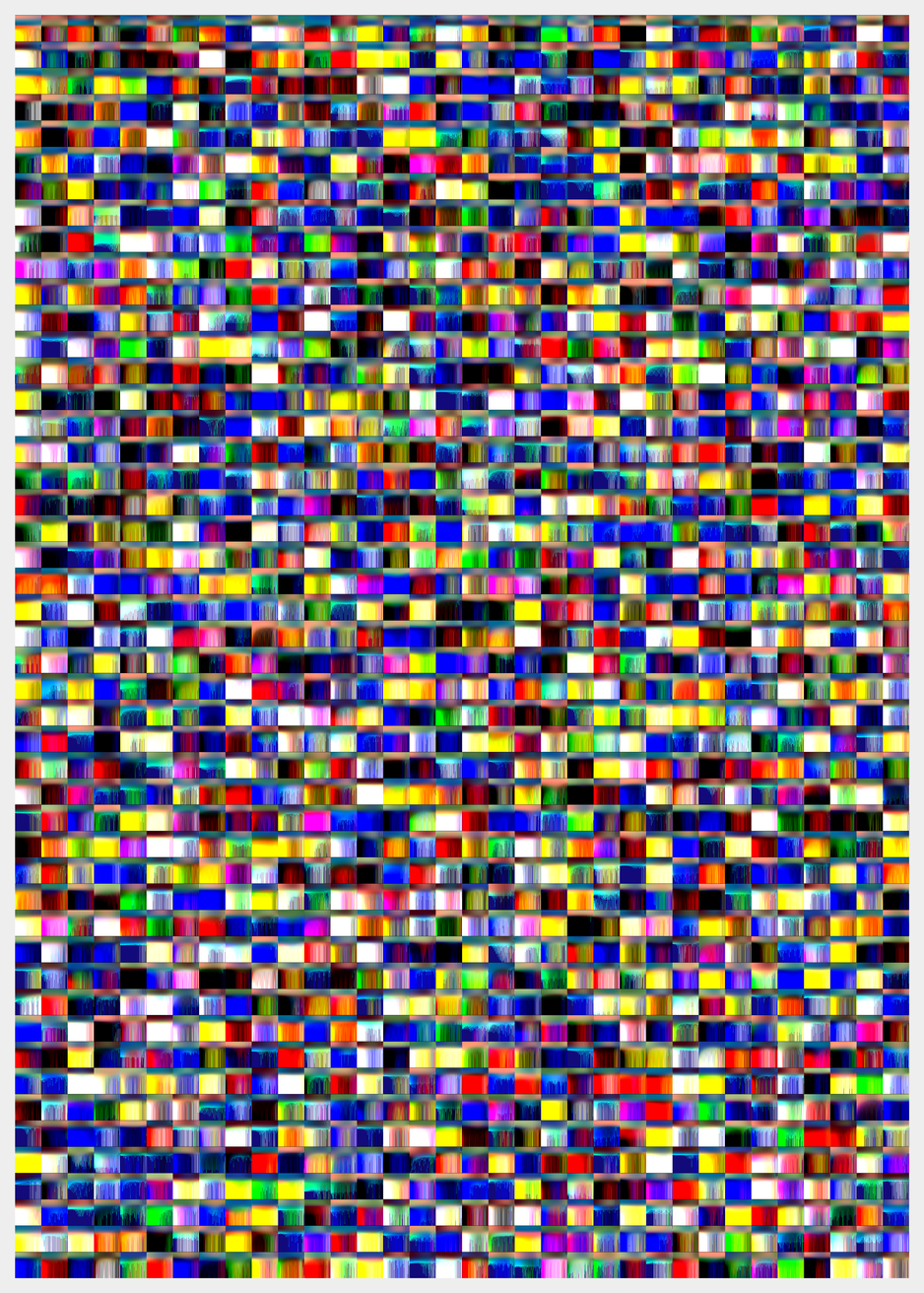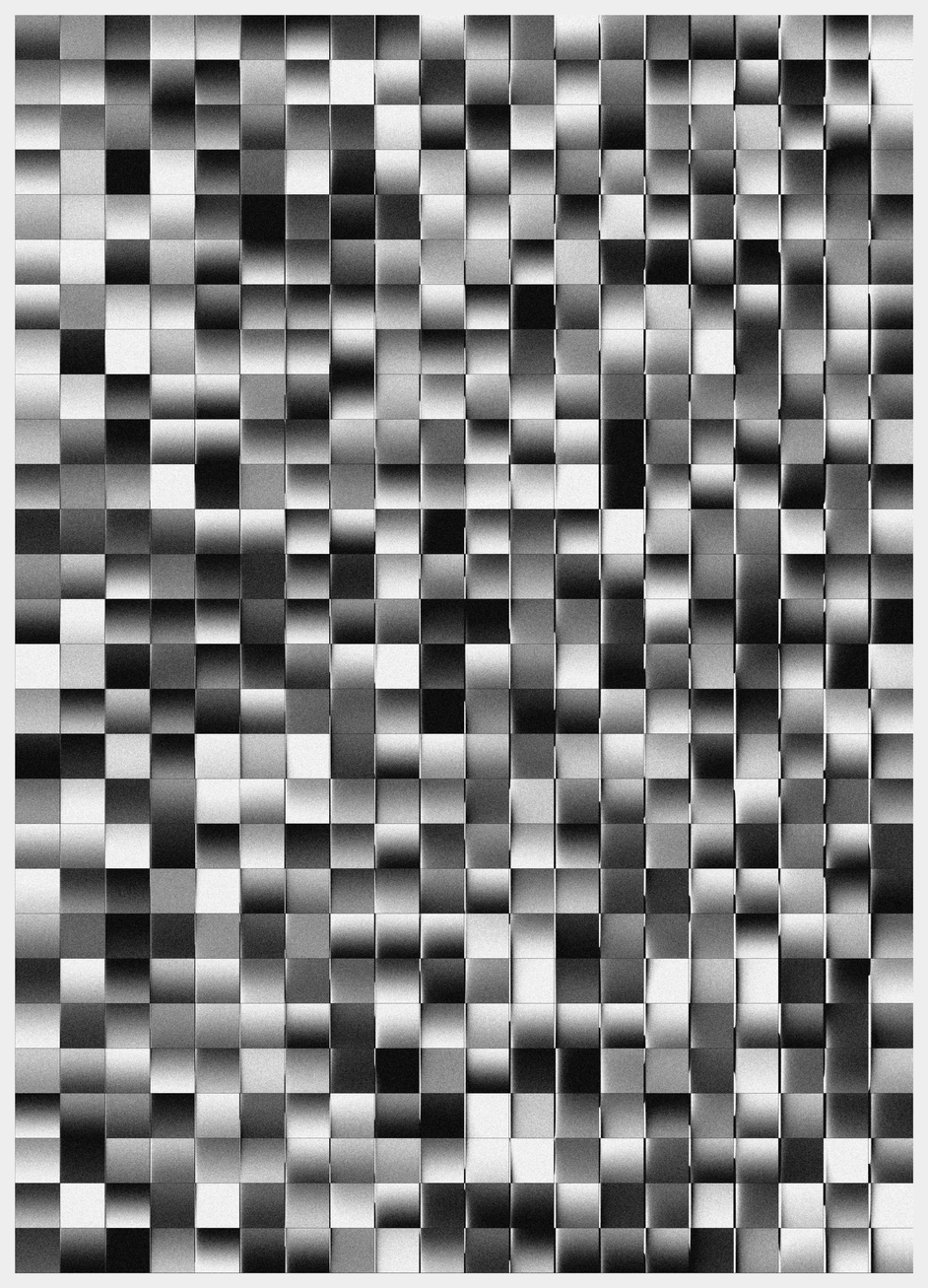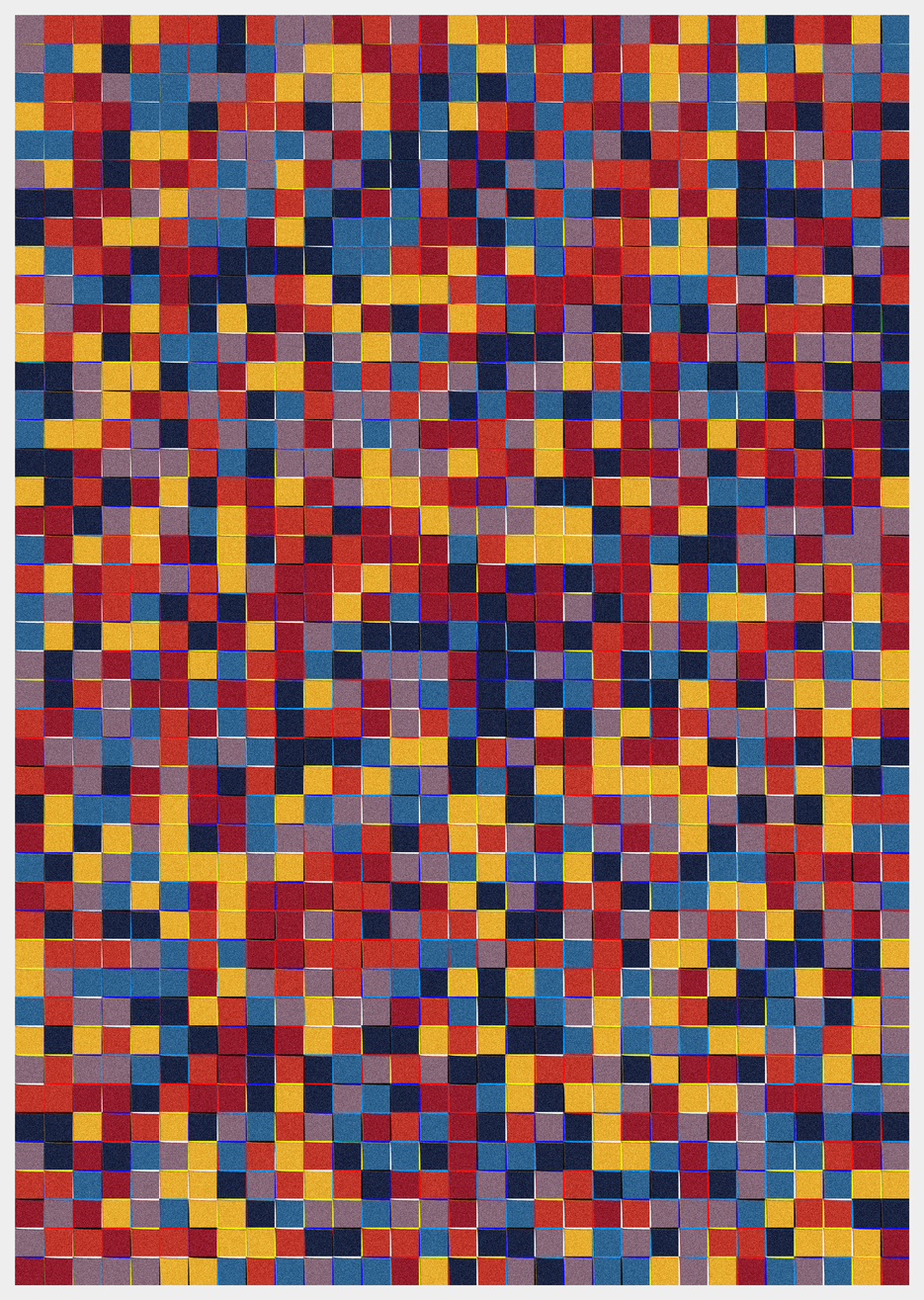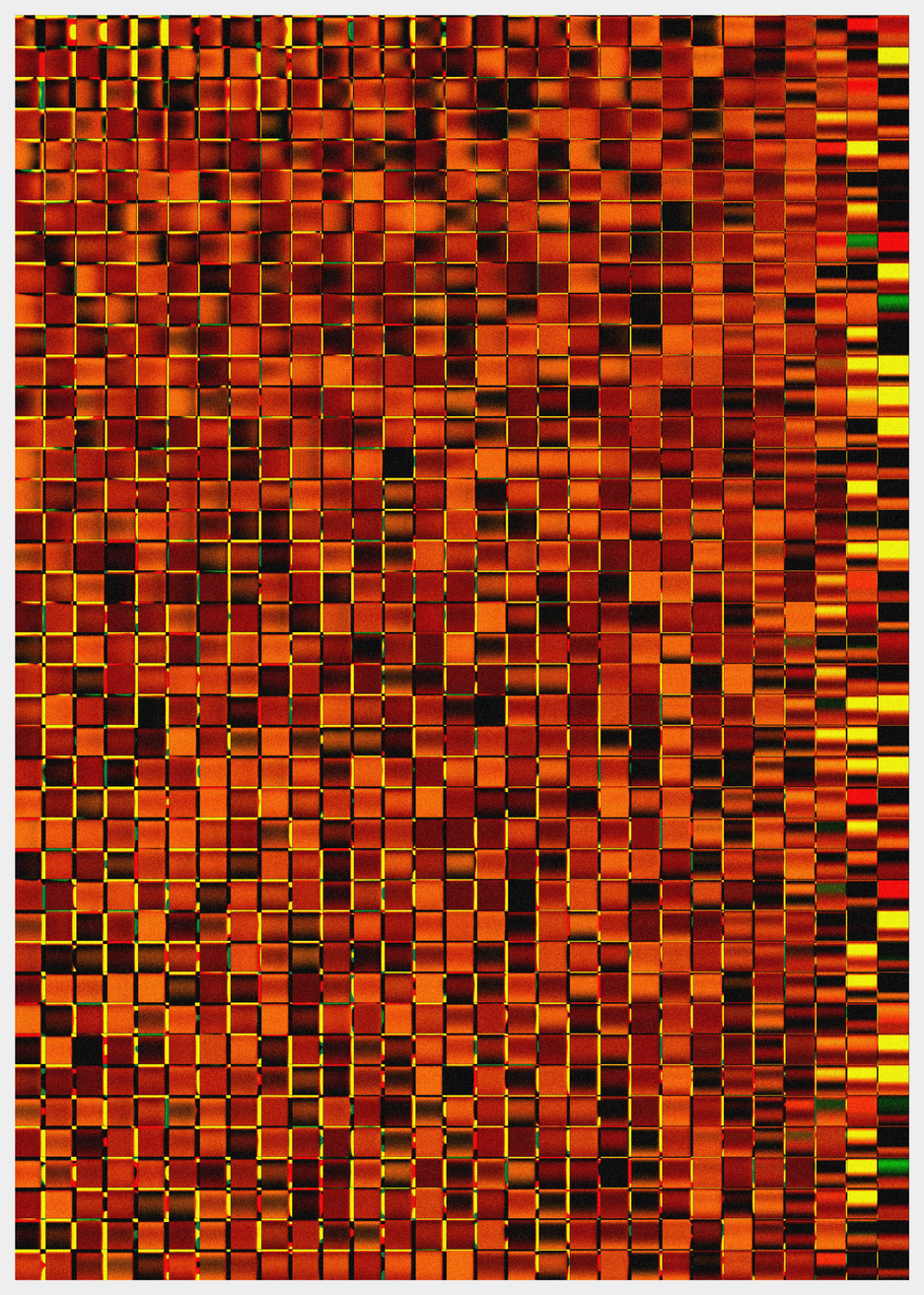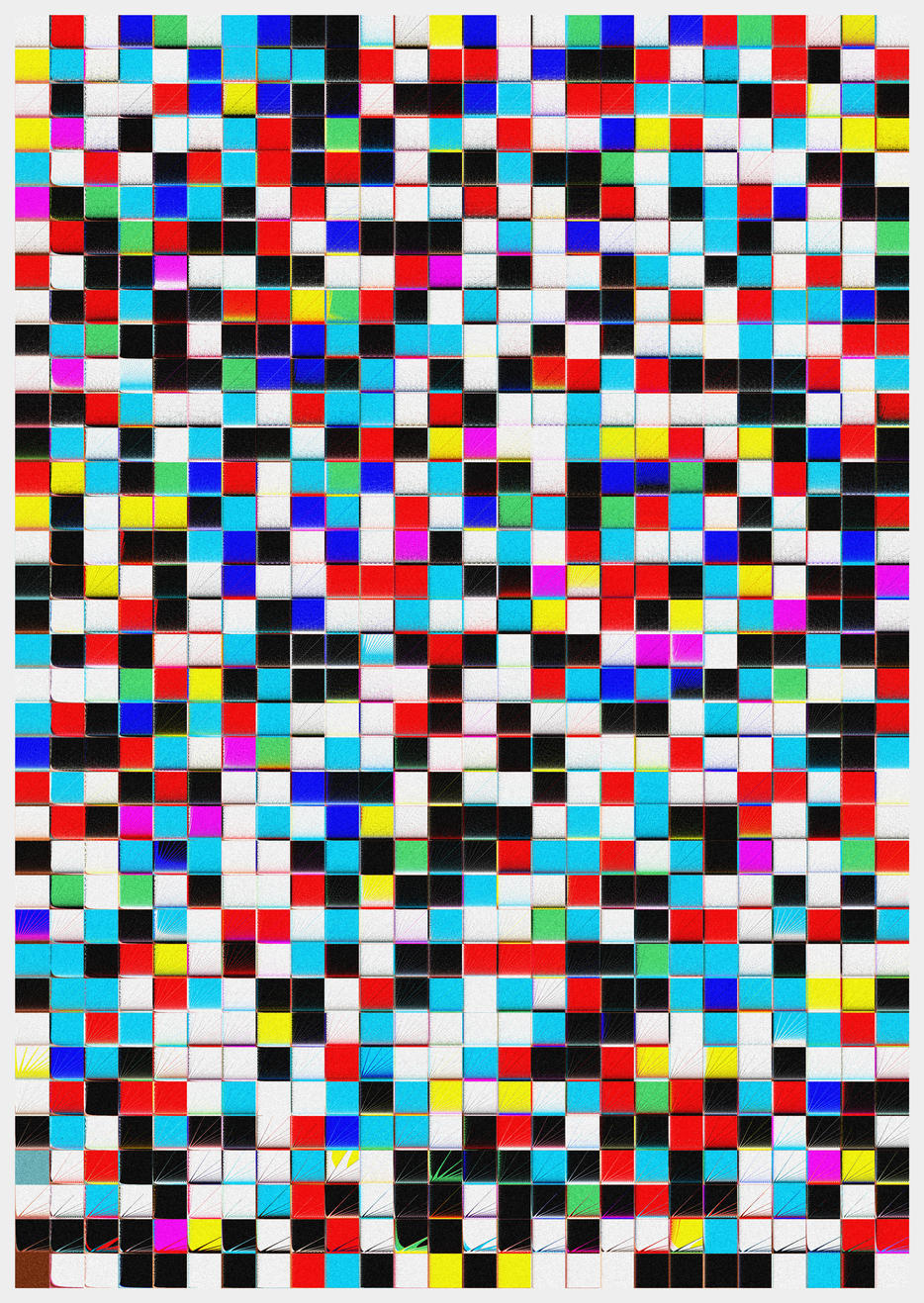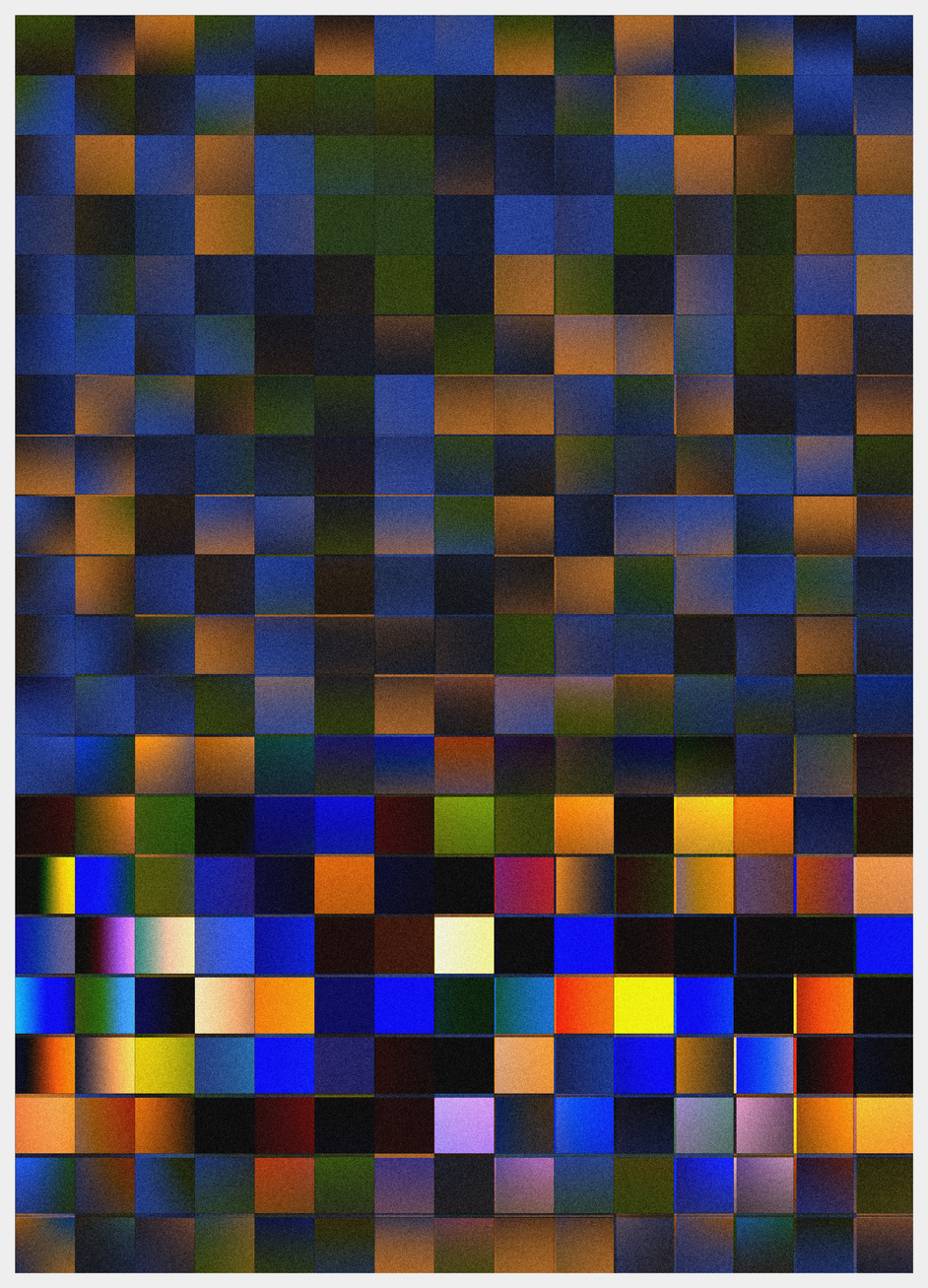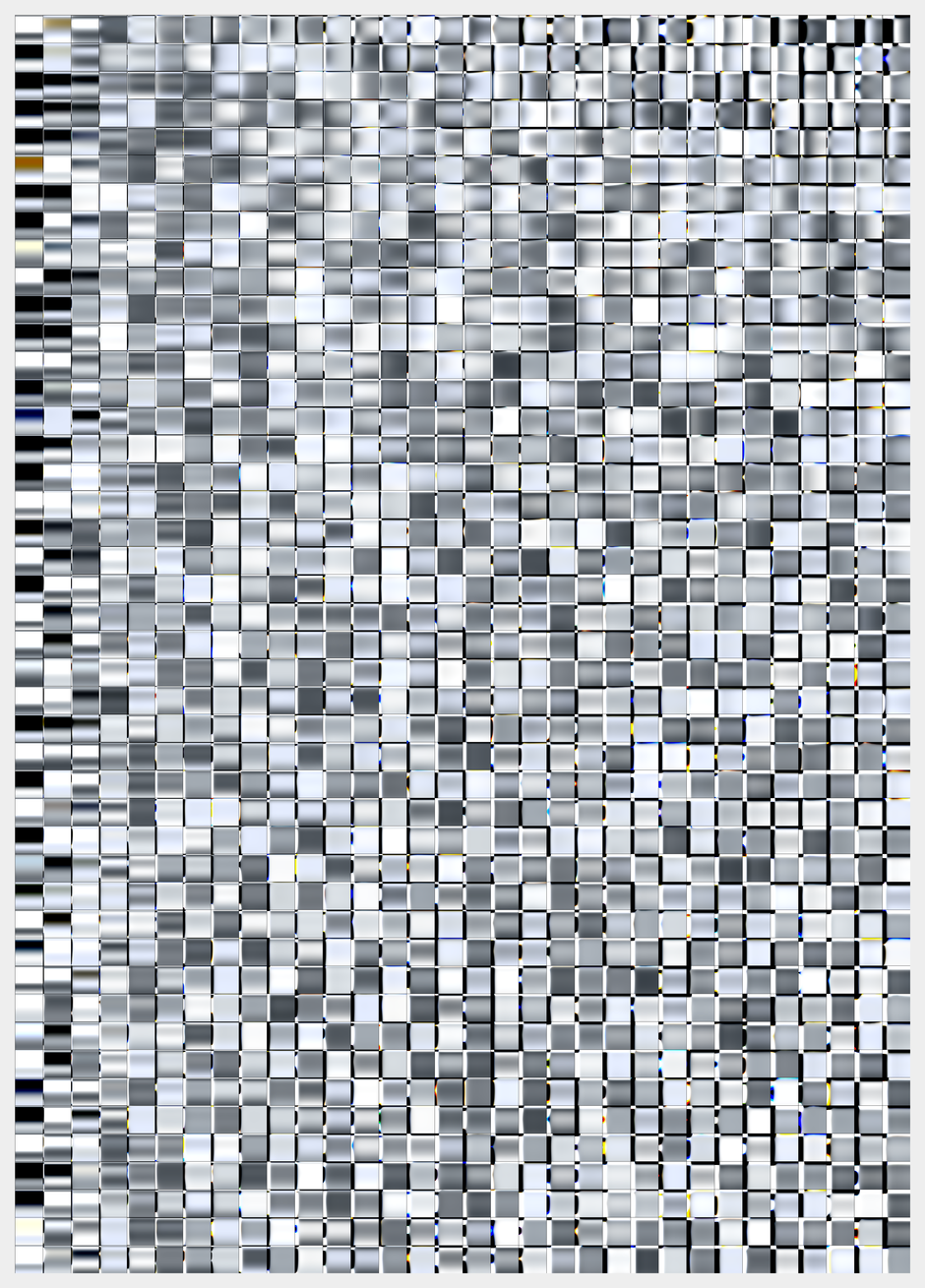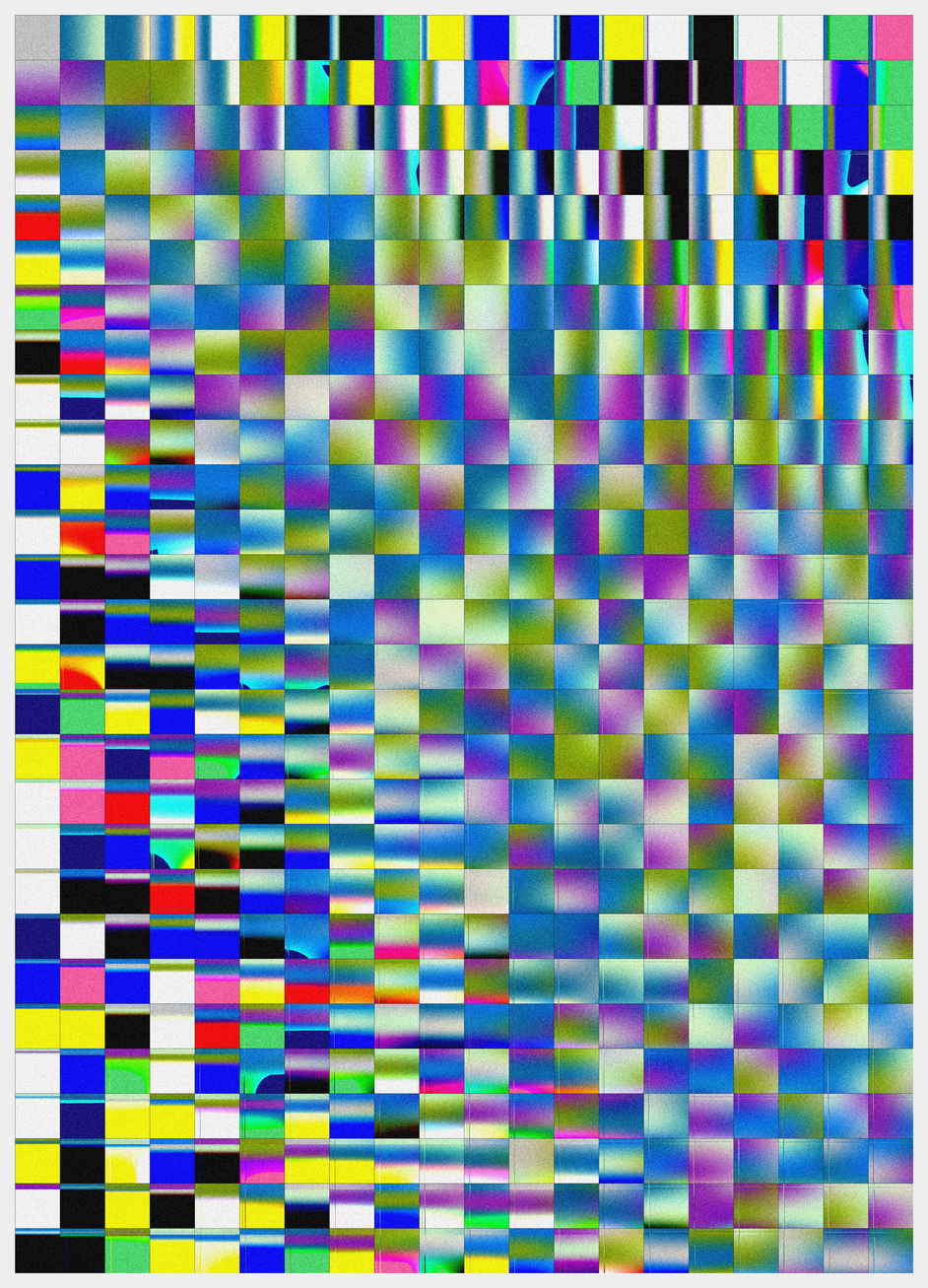by grodarh
Interpolator
IPFS
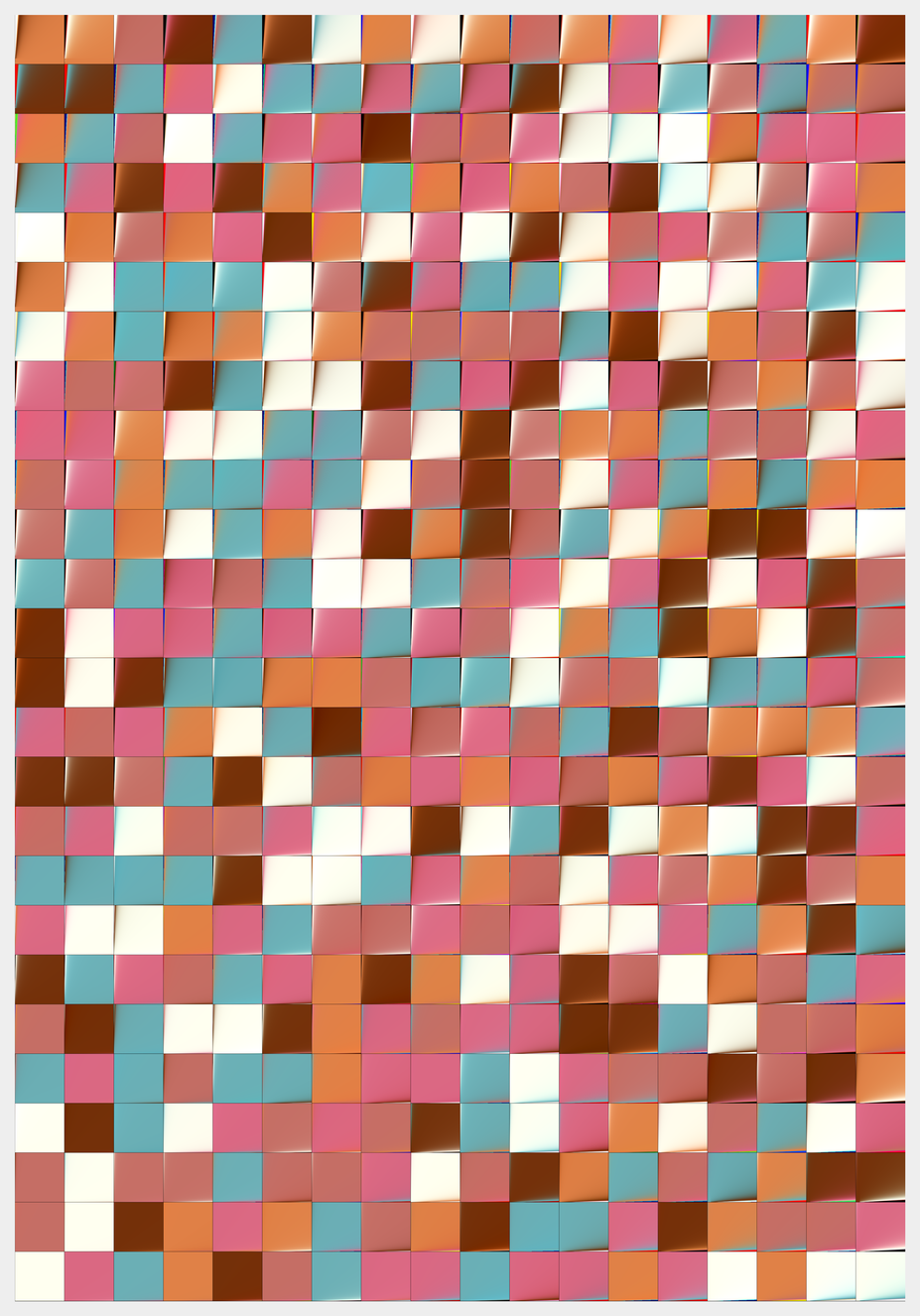
4 December 2024•TEZOS•IPFS
Recently, while scrolling through my Twitter feed, I came across something about the bicubic interpolation method, which reminded me of a funny joke my professor once shared during a lecture on numerical methods:
"Bicubic interpolation is like ordering pizza from four different kitchens at once and then making them agree on the recipe. Each slice ends up exactly how you want it, but it takes way more effort than just eating plain bread 😄".
This algorithm truly tries to account for all surrounding points to achieve the smoothest, most natural result — a real perfectionist in the world of interpolation! This mention inspired me to revisit bicubic interpolation, but this time from an artist's perspective.
Bicubic interpolation is a method for interpolating data points on a two-dimensional grid. It creates smoother surfaces compared to bilinear or nearest-neighbor interpolation. While bilinear interpolation considers only 4 pixels (2×2), bicubic interpolation takes into account 16 pixels (4×4), which is why it’s computationally more demanding. Here I fill the canvas pixel by pixel, using only the bicubic interpolation method to achieve smooth color gradients. A bit of chaos is introduced to the overall composition through my custom metric for pixel placement.
Press S or double-click to save as PNG.
Kyiv, 11.2024.
"Bicubic interpolation is like ordering pizza from four different kitchens at once and then making them agree on the recipe. Each slice ends up exactly how you want it, but it takes way more effort than just eating plain bread 😄".
This algorithm truly tries to account for all surrounding points to achieve the smoothest, most natural result — a real perfectionist in the world of interpolation! This mention inspired me to revisit bicubic interpolation, but this time from an artist's perspective.
Bicubic interpolation is a method for interpolating data points on a two-dimensional grid. It creates smoother surfaces compared to bilinear or nearest-neighbor interpolation. While bilinear interpolation considers only 4 pixels (2×2), bicubic interpolation takes into account 16 pixels (4×4), which is why it’s computationally more demanding. Here I fill the canvas pixel by pixel, using only the bicubic interpolation method to achieve smooth color gradients. A bit of chaos is introduced to the overall composition through my custom metric for pixel placement.
Press S or double-click to save as PNG.
Kyiv, 11.2024.
OPEN EDITIONS UNTIL March 31, 2025 @ 18:59
minted
110
fixed price
0.987654 TEZ
Lorem ipsum project longer longer
0.00001 ETH
Lorem ipsum project longer longer
0.00001 ETH
Lorem ipsum project longer longer
0.00001 ETH
Lorem ipsum project longer longer
0.00001 ETH
Lorem ipsum project longer longer
0.00001 ETH
Lorem ipsum project longer longer
0.00001 ETH
Lorem ipsum project longer longer
0.00001 ETH
Lorem ipsum project longer longer
0.00001 ETH
Lorem ipsum project longer longer
0.00001 ETH
Lorem ipsum project longer longer
0.00001 ETH
Lorem ipsum project longer longer
0.00001 ETH
Lorem ipsum project longer longer
0.00001 ETH
Lorem ipsum project longer longer
0.00001 ETH
Lorem ipsum project longer longer
0.00001 ETH
Lorem ipsum project longer longer
0.00001 ETH
Lorem ipsum project longer longer
0.00001 ETH
Lorem ipsum project longer longer
0.00001 ETH
Lorem ipsum project longer longer
0.00001 ETH
Lorem ipsum project longer longer
0.00001 ETH
Lorem ipsum project longer longer
0.00001 ETH
Lorem ipsum project longer longer
0.00001 ETH
Lorem ipsum project longer longer
0.00001 ETH
Lorem ipsum project longer longer
0.00001 ETH
Lorem ipsum project longer longer
0.00001 ETH
